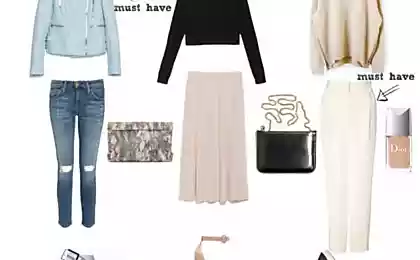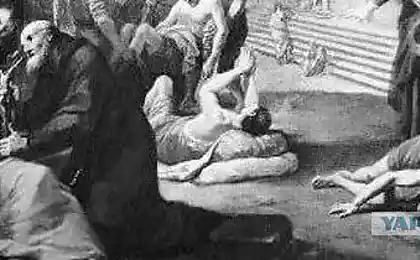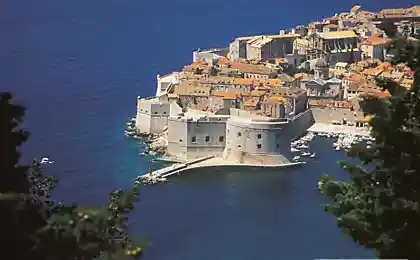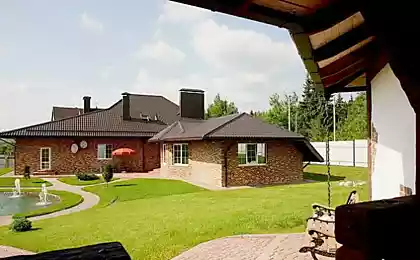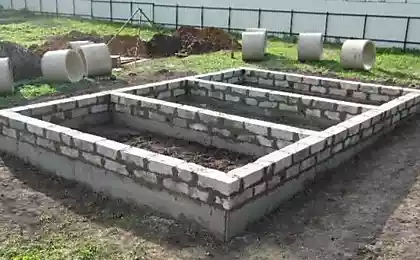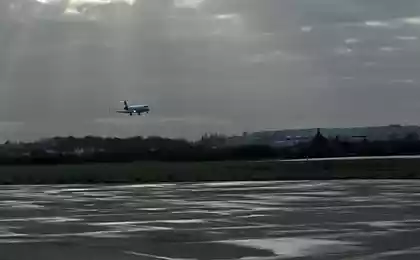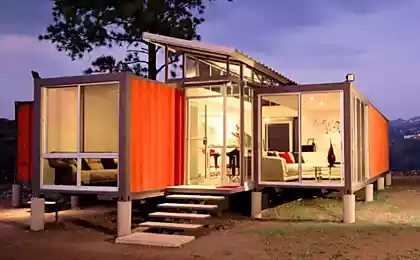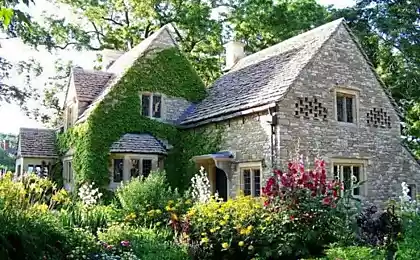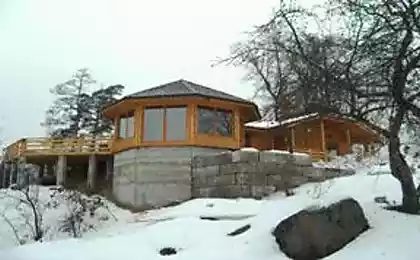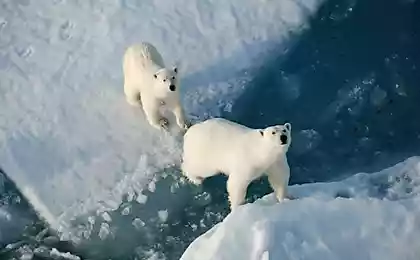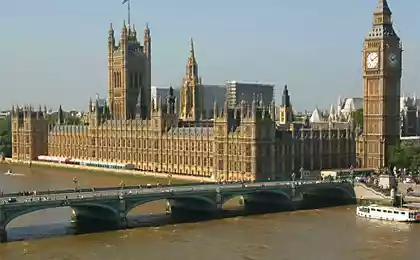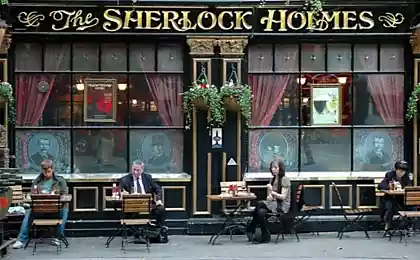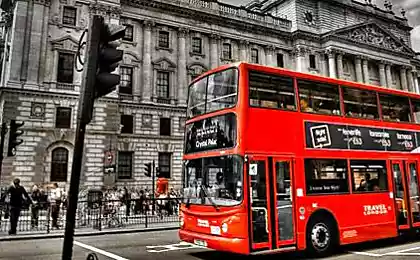938
Irish pubs - the foundation of Ireland
Pubs, probably can be considered the foundation of the Irish culture. Today, as a century ago, every evening they gather people of all ages and social status. Of course, many places are open during the day and even offer the opportunity to have a snack or lunch tightly. Yet, the main product consumption in a pub - alcohol (the lion's share of the world-famous TM "Guinness"), so anyway, and the night - the best time of day for a hike to the pub. I once watched in the business district of Dublin, at the end of the working day, from the high-rise, office building came a man in a jacket and a leather briefcase in hand, casual wave of his hand loosened his tie and went straight to the nearest pub. In my opinion, this case is a good idea sums up the role in the life of the Irish pubs. There they come together, communicate, transact, folk singing, drinking songs and, of course, passed a glass or two. Pubs attract its democratic character, its decoration, ambience, style of play music and various performances. In this post I would like to make a small portrait of Irish pubs, on the basis of the institutions where I was able to visit.
37 ph via omnesolum
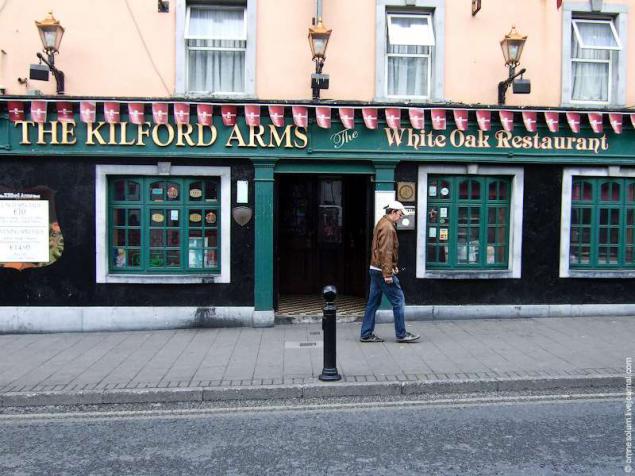
2. The main, if not the central element of any pub - a bartender. A good bartender should not just be able to pour the liquid from the bottle into the glasses, but also to understand the spirits and know by heart the basic ingredients and proportions of cocktails and blends. In addition, a good bartender knows how to keep the conversation with visitors, whether it's a large and cheerful company of local residents or a lone stranger. In the photo: Bachelor Inn Bar, Dublin.

3. In small towns, where everyone knows each other, it is possible to observe how the bartender completely at ease joking and laughing with visitors, while visiting a person might feel that it intrudes into someone else's family, when you come into the pub. In fact, the Irish are always welcome, and you will certainly take with open arms.
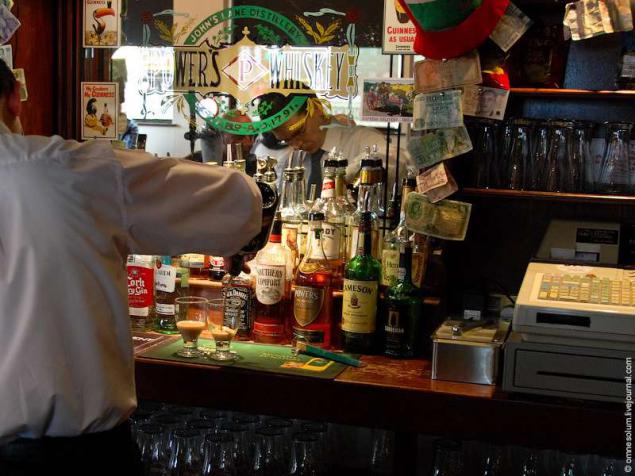
4. The range in Irish pubs is huge. For example, in Dublin "Temple Bar" you can taste almost two hundred whiskeys. And yet, there is a group of basic drinks. It includes stouts Guinness, Beamish, Murphy's, an apple or pear cider Bulmers (Ireland is issued under the name of Magners), whiskey Jameson, Bushmills, Powers, ale Kilkenny, Smithwicks, Baileys cream liqueur and a few others. As a rule, there are also popular foreign brands - Heineken, Carlsberg, Coors, Miller, Smirnoff, Four Roses, etc. In the photo: Lanigan's Bar, Kilkenny.

5. Some pubs brewed their own ales or stouts, and therefore the principle of not selling drinks competitors - such as "Guinness".
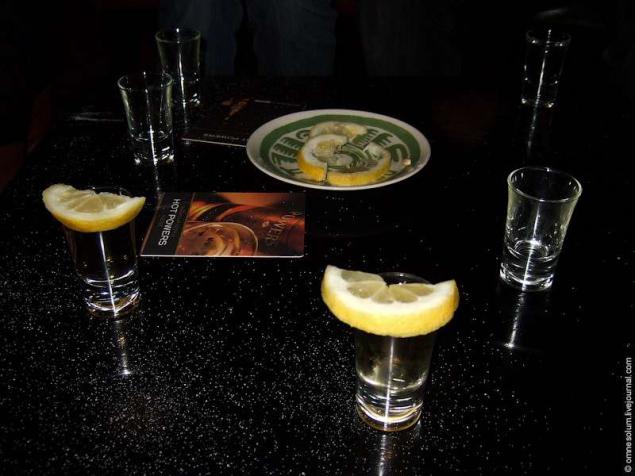
6. Almost every pub you can find a TV. It may just serve as a backdrop for the conversation, and can fully engage the attention - for example, during football matches, rugby or hurling. In the photo: The Reveller Bar, Donegal.
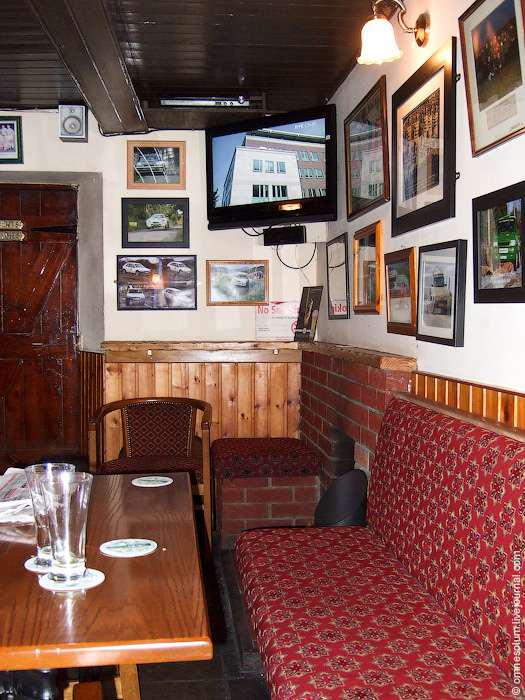
7. Certain places hold competitions on the game of darts (darts). To win requires accuracy and resistance to alcohol, because after a few pints of "Guinness" the game is much more complicated. In the photo: The Reveller Bar, Donegal.

8. Irish pubs are famous for their live music and songs. In some places for artists allocated special areas or mini-stage in Dublin "Temple Bar".
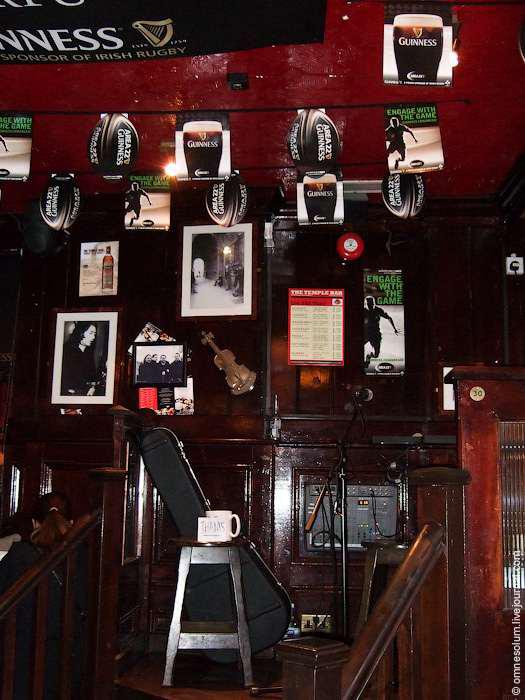
9. But often the musicians are located right behind one of the free tables. After the concert, you can chat with them on various topics or even offer them a glass of liquor in gratitude. In the photo: The Celt, Dublin.
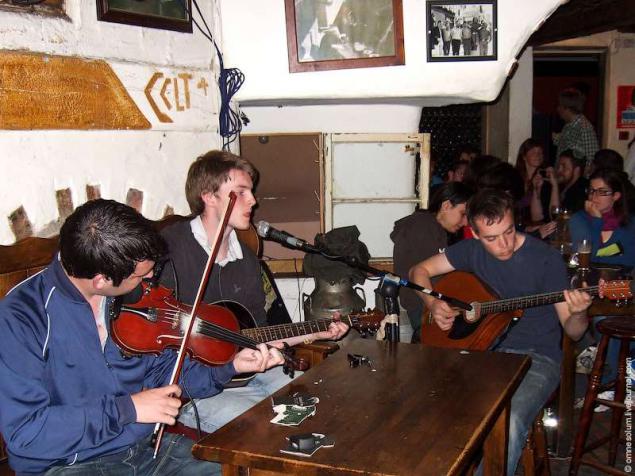
10. Rounding out the entertainment circle Irish dancing, during which the dancers beat time solid-soled shoes. In the photo: Knightsbridge Bar, Arlington hotel, Dublin.
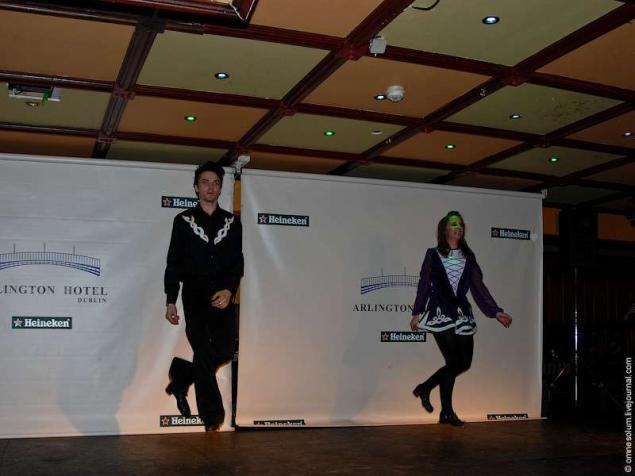
11. Dancing is much more difficult to organize all the rest, because the pub is almost always very little space.
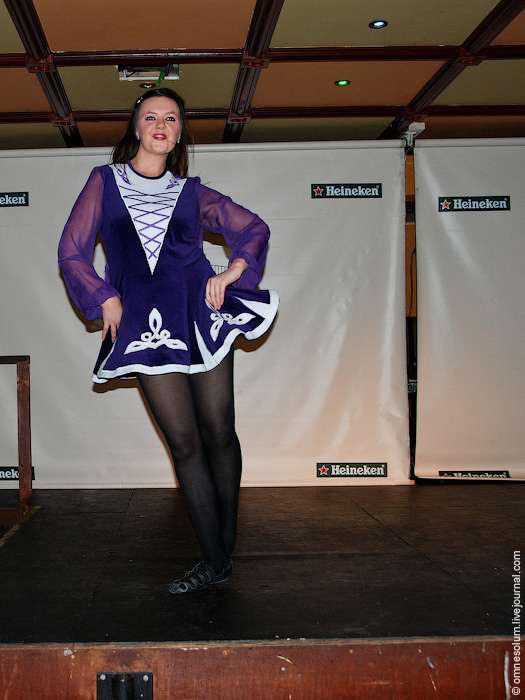
12. Away from the tourist trail, you can stumble upon a completely empty pub, but it's probably rare. In the photo: The John Barry, Wexford.
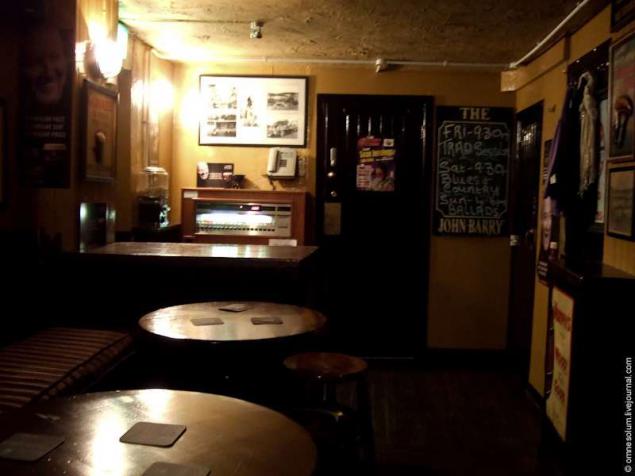
13. If the institution of several floors, it turns out quite a comfortable environment - the people, but they are evenly distributed throughout the area, and so no one does not interfere with each other. In the photo: Messrs Maguire, Dublin.
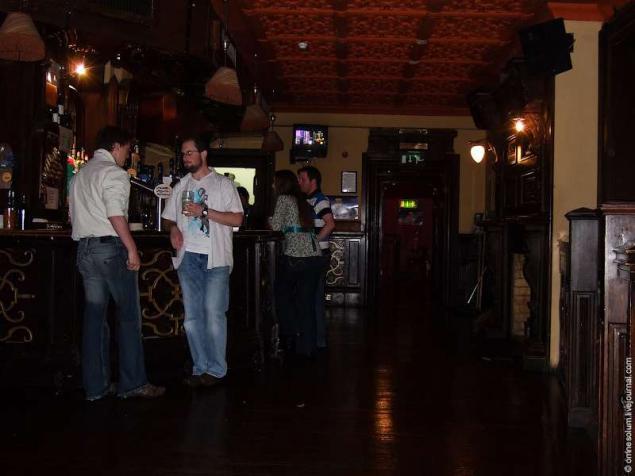
14. However, in large cities and tourist areas in the evening, pubs look like this, as shown in the photos. In a few words - apple nowhere to fall. Still, the situation is usually friendly - in close quarters, but not mad. In the photo: The Temple Bar, Dublin.
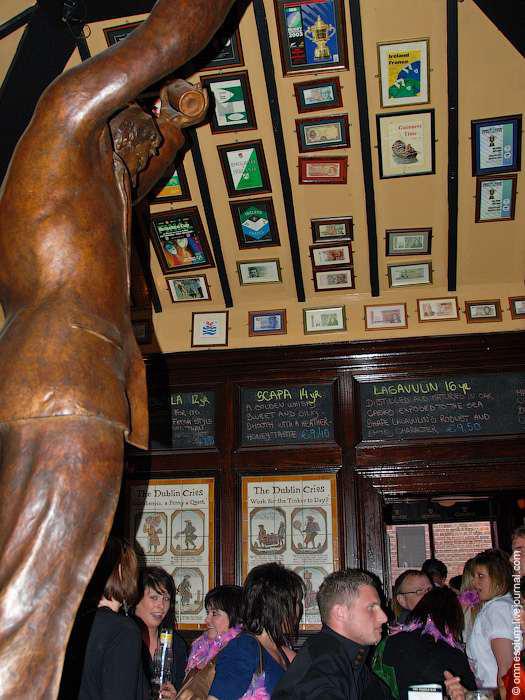
15. The pubs are renowned for their colorful facades. They sometimes draw the logo of the institution or drinks that are proud. For example, the pub Matt the Millers in Kilkenny painted emblem of the eponymous ale Kilkenny.
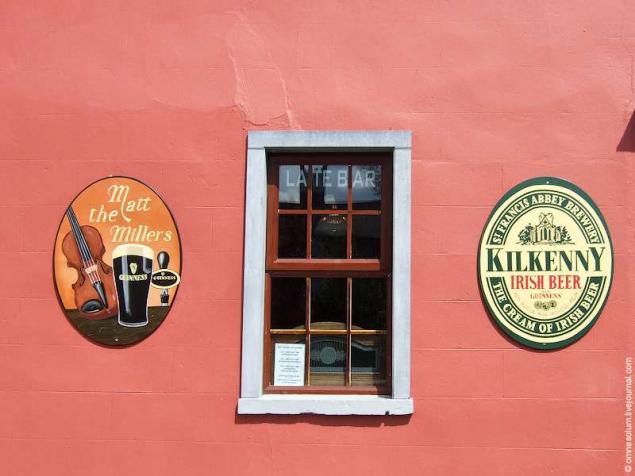
16. There are small pubs, a few tables as James Kehoe in the village of Kilmore Kay.
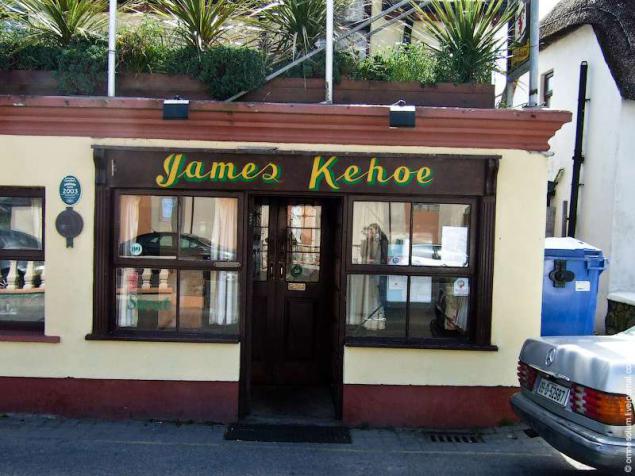
17. And there are big, a few floors as Matt the Millers in Kilkenny.

18. There are modest as Lynch's Bar in the city of Slane.
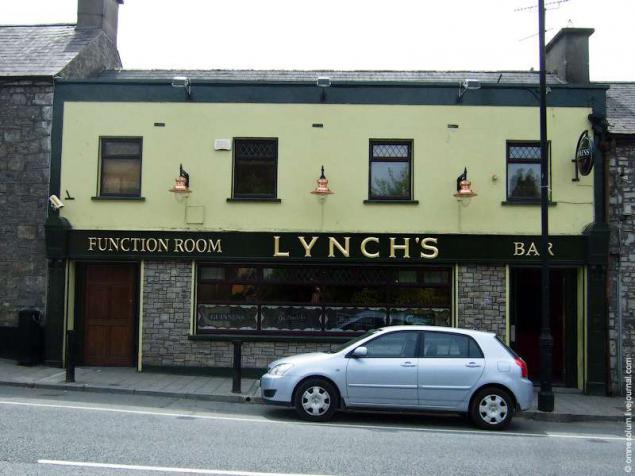
19. Or not so modest as bar The Olde Castle in Donegal.
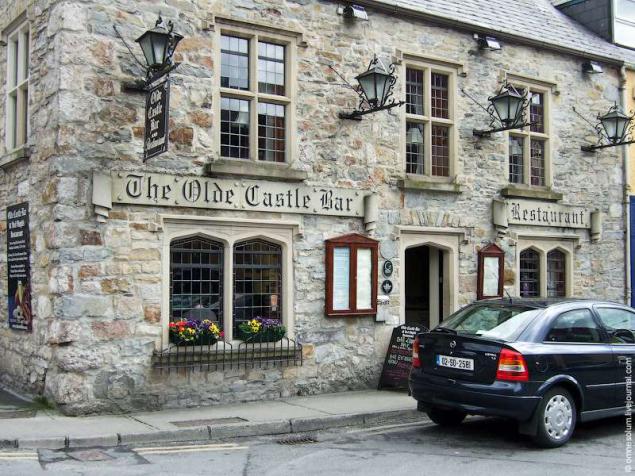
20. Names from a wide variety of pubs. It happens after the owner, the bar Matt Weldon in suburban Dublin.
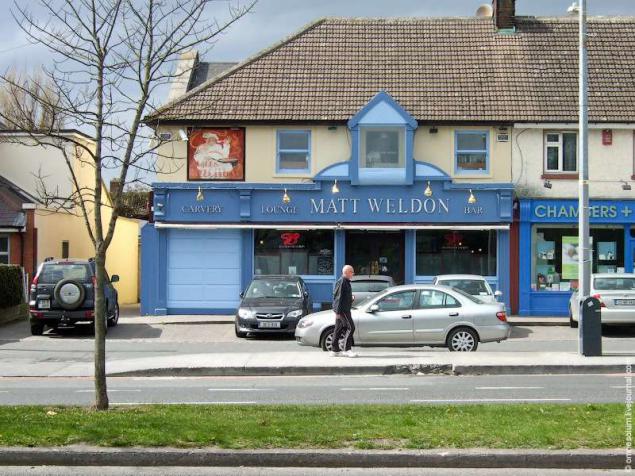
21. Sometimes after any animal as a pub The Black Cat in Kilkenny.

22. But there are also more exotic names, sometimes associated with the history of the pub and its owner. For example, the pub Hole in the Wall Galway.
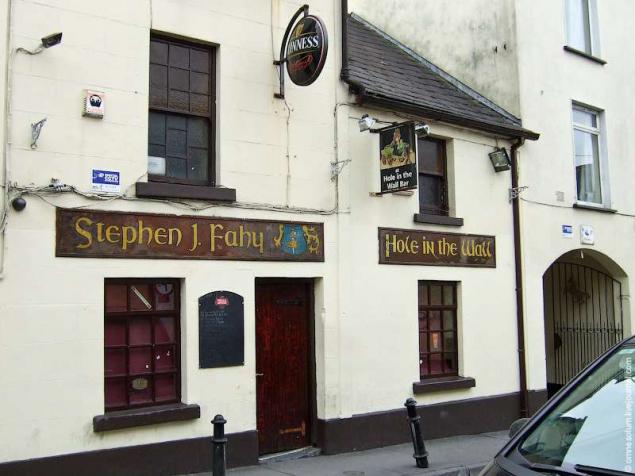
23. Finally, I want to show a few more pubs. Perhaps the most photographed pub in Ireland - The Temple Bar in Dublin.
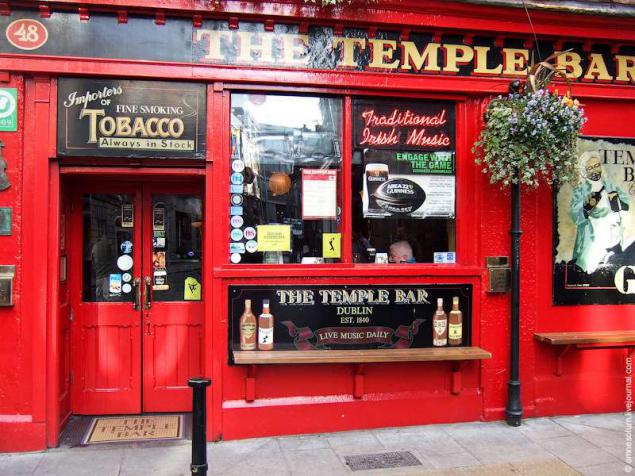
24. Pravda Pub with stylized Soviet Union, also in Dublin.
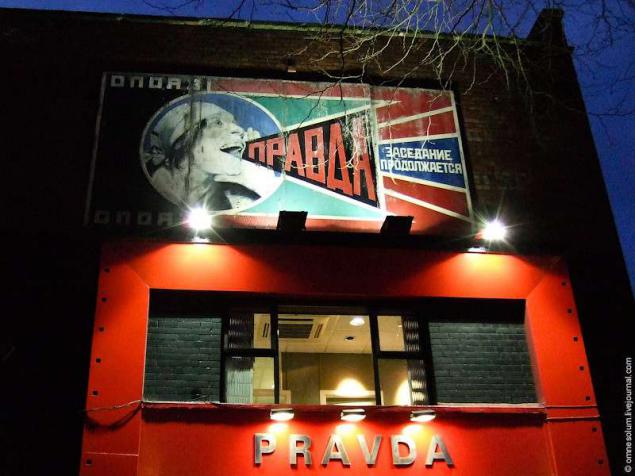
25. The pub The Brazen Head in Dublin.

26. It is argued that this is the oldest pub in Ireland, although the title is disputed by some other institutions.
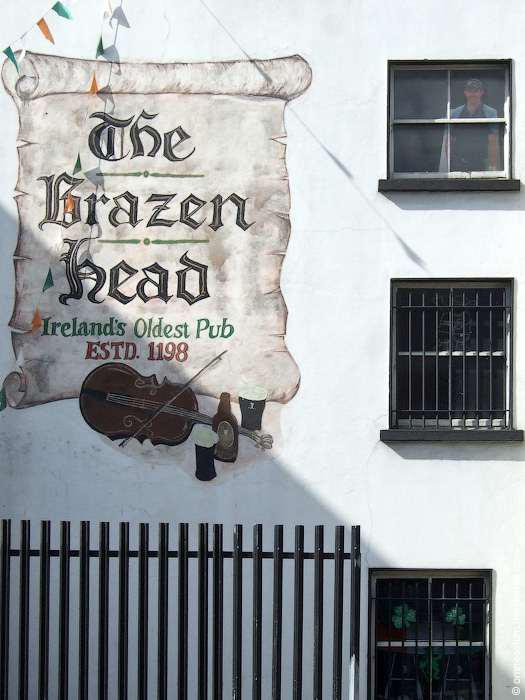
27. The Turk's Head Pub in Dublin's Temple Bar district.

28. Lucky Star Bar on the largest of the Aran Islands - Inishmore.

29. Vaughan's Pub in Clifden.
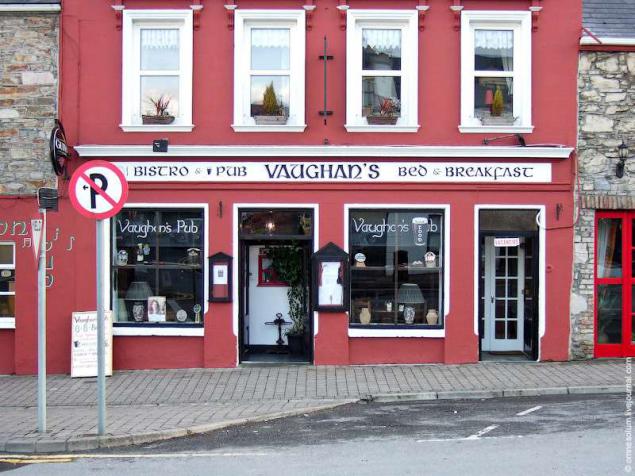
30. The Cape Bar in Wexford.
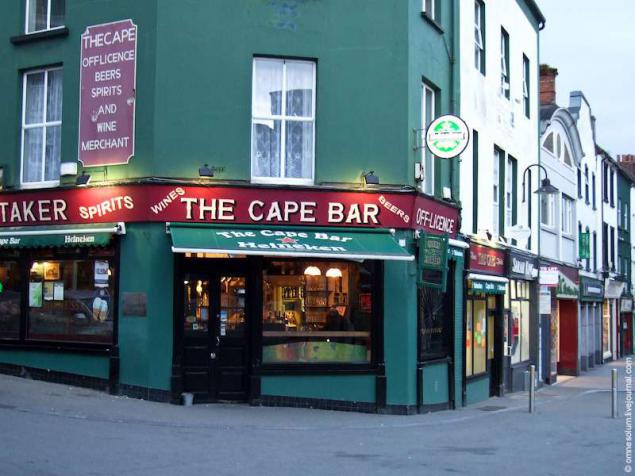
31. Wacky Apple Bar in Waterford.
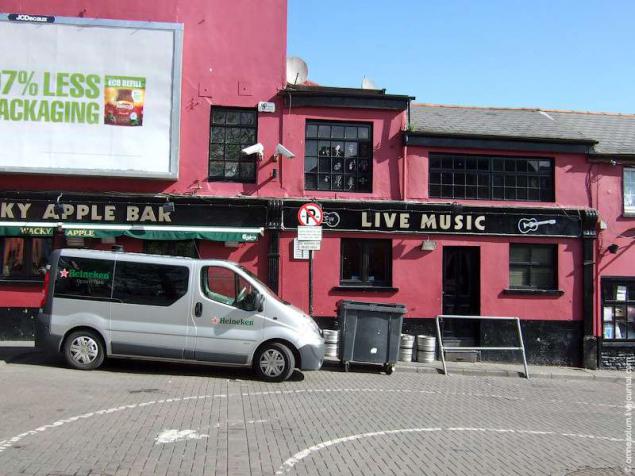
32. The interior of the pub Matt the Millers in Kilkenny.
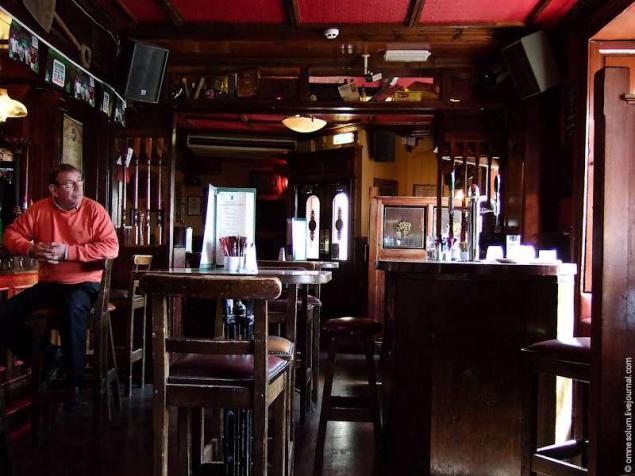
33. Donaghys Pub in Sligo.
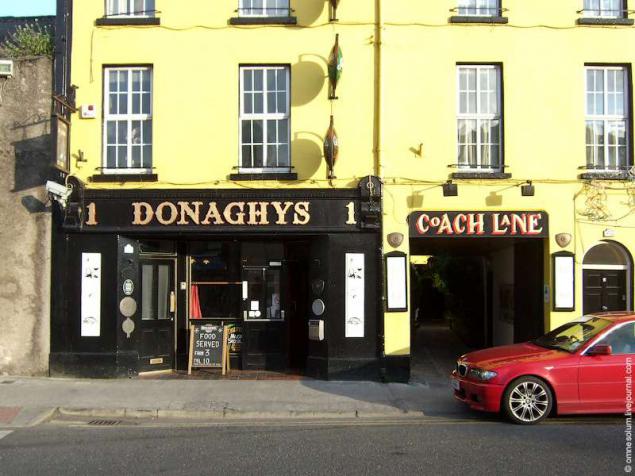
34. The Stables Pub in Sligo.
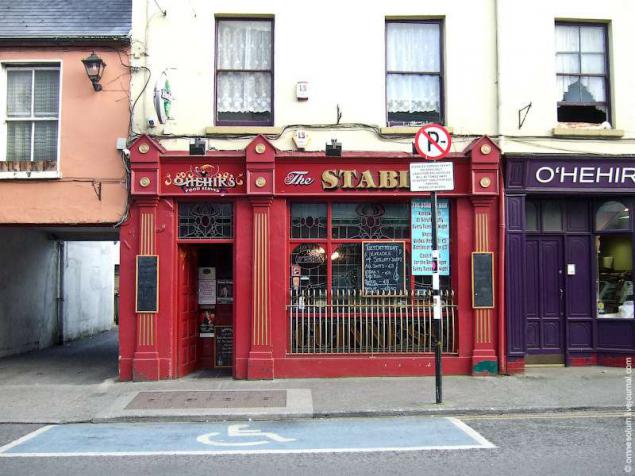
35. Hennigan's Bar in Sligo.
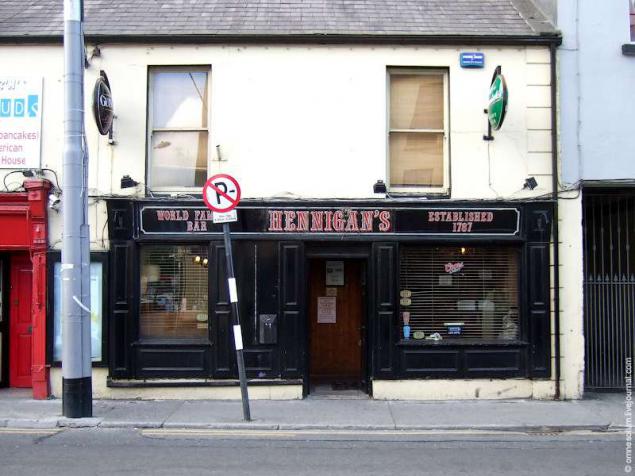
36. Pub Hargadon Bros Sligo.
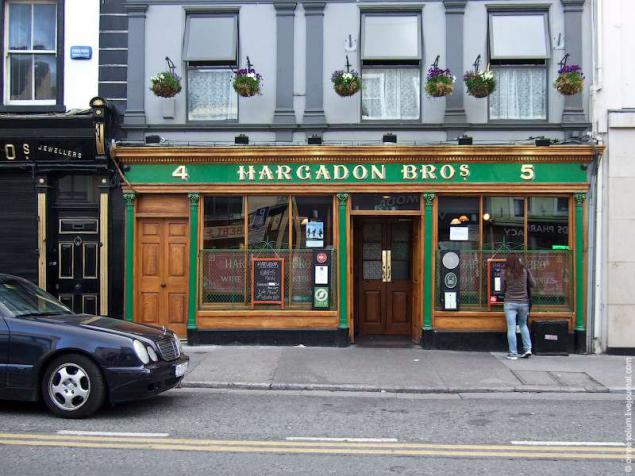
37. Tirconaill Bar in Donegal with the name written in Irish.
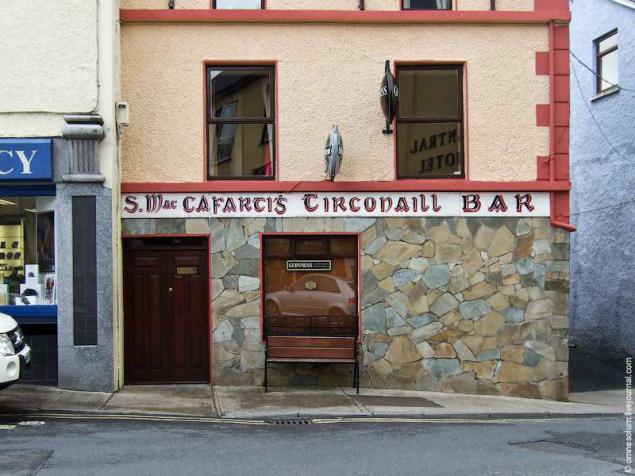
Source:
37 ph via omnesolum

2. The main, if not the central element of any pub - a bartender. A good bartender should not just be able to pour the liquid from the bottle into the glasses, but also to understand the spirits and know by heart the basic ingredients and proportions of cocktails and blends. In addition, a good bartender knows how to keep the conversation with visitors, whether it's a large and cheerful company of local residents or a lone stranger. In the photo: Bachelor Inn Bar, Dublin.

3. In small towns, where everyone knows each other, it is possible to observe how the bartender completely at ease joking and laughing with visitors, while visiting a person might feel that it intrudes into someone else's family, when you come into the pub. In fact, the Irish are always welcome, and you will certainly take with open arms.

4. The range in Irish pubs is huge. For example, in Dublin "Temple Bar" you can taste almost two hundred whiskeys. And yet, there is a group of basic drinks. It includes stouts Guinness, Beamish, Murphy's, an apple or pear cider Bulmers (Ireland is issued under the name of Magners), whiskey Jameson, Bushmills, Powers, ale Kilkenny, Smithwicks, Baileys cream liqueur and a few others. As a rule, there are also popular foreign brands - Heineken, Carlsberg, Coors, Miller, Smirnoff, Four Roses, etc. In the photo: Lanigan's Bar, Kilkenny.

5. Some pubs brewed their own ales or stouts, and therefore the principle of not selling drinks competitors - such as "Guinness".

6. Almost every pub you can find a TV. It may just serve as a backdrop for the conversation, and can fully engage the attention - for example, during football matches, rugby or hurling. In the photo: The Reveller Bar, Donegal.

7. Certain places hold competitions on the game of darts (darts). To win requires accuracy and resistance to alcohol, because after a few pints of "Guinness" the game is much more complicated. In the photo: The Reveller Bar, Donegal.

8. Irish pubs are famous for their live music and songs. In some places for artists allocated special areas or mini-stage in Dublin "Temple Bar".

9. But often the musicians are located right behind one of the free tables. After the concert, you can chat with them on various topics or even offer them a glass of liquor in gratitude. In the photo: The Celt, Dublin.

10. Rounding out the entertainment circle Irish dancing, during which the dancers beat time solid-soled shoes. In the photo: Knightsbridge Bar, Arlington hotel, Dublin.

11. Dancing is much more difficult to organize all the rest, because the pub is almost always very little space.

12. Away from the tourist trail, you can stumble upon a completely empty pub, but it's probably rare. In the photo: The John Barry, Wexford.

13. If the institution of several floors, it turns out quite a comfortable environment - the people, but they are evenly distributed throughout the area, and so no one does not interfere with each other. In the photo: Messrs Maguire, Dublin.

14. However, in large cities and tourist areas in the evening, pubs look like this, as shown in the photos. In a few words - apple nowhere to fall. Still, the situation is usually friendly - in close quarters, but not mad. In the photo: The Temple Bar, Dublin.

15. The pubs are renowned for their colorful facades. They sometimes draw the logo of the institution or drinks that are proud. For example, the pub Matt the Millers in Kilkenny painted emblem of the eponymous ale Kilkenny.

16. There are small pubs, a few tables as James Kehoe in the village of Kilmore Kay.

17. And there are big, a few floors as Matt the Millers in Kilkenny.

18. There are modest as Lynch's Bar in the city of Slane.

19. Or not so modest as bar The Olde Castle in Donegal.

20. Names from a wide variety of pubs. It happens after the owner, the bar Matt Weldon in suburban Dublin.

21. Sometimes after any animal as a pub The Black Cat in Kilkenny.

22. But there are also more exotic names, sometimes associated with the history of the pub and its owner. For example, the pub Hole in the Wall Galway.

23. Finally, I want to show a few more pubs. Perhaps the most photographed pub in Ireland - The Temple Bar in Dublin.

24. Pravda Pub with stylized Soviet Union, also in Dublin.

25. The pub The Brazen Head in Dublin.

26. It is argued that this is the oldest pub in Ireland, although the title is disputed by some other institutions.

27. The Turk's Head Pub in Dublin's Temple Bar district.

28. Lucky Star Bar on the largest of the Aran Islands - Inishmore.

29. Vaughan's Pub in Clifden.

30. The Cape Bar in Wexford.

31. Wacky Apple Bar in Waterford.

32. The interior of the pub Matt the Millers in Kilkenny.

33. Donaghys Pub in Sligo.

34. The Stables Pub in Sligo.

35. Hennigan's Bar in Sligo.

36. Pub Hargadon Bros Sligo.

37. Tirconaill Bar in Donegal with the name written in Irish.

Source:




